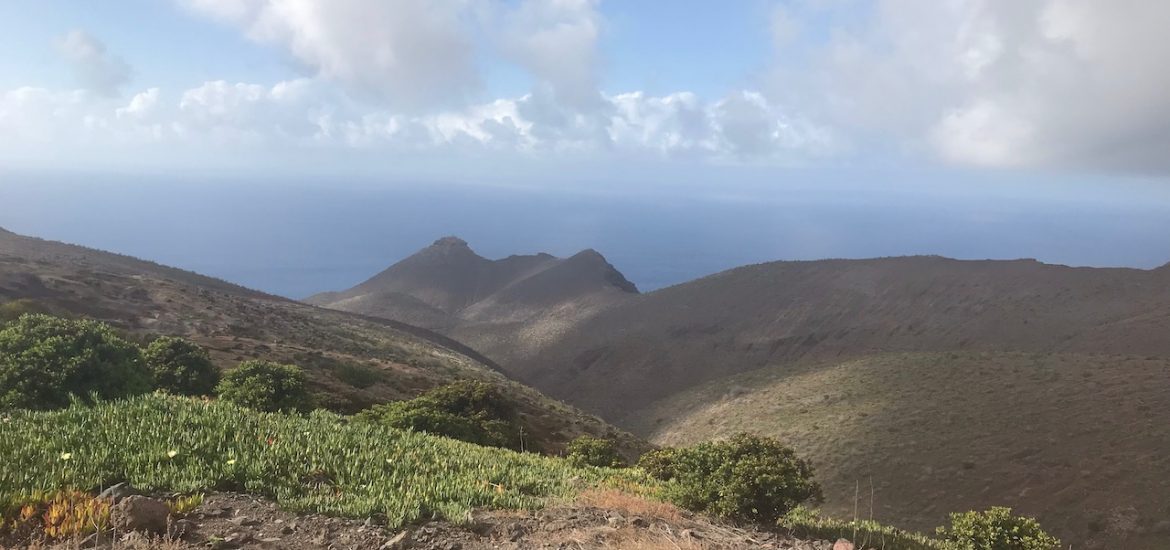We’re out to sea again, tonight celebrating calm seas and winds on the way to Salvador, Brazil, thanks to the influence of my maternal grandmother, known as Super Granny. It’s Super Granny’s birthday today. Although she passed away at the age of 102, her influence lives on and we know she still plays an active role in improving our lives.
While she didn’t help us make it to the pig roast in St. Helena after our crossing from Namibia, it didn’t really matter because we had tacos on the boat, got a good night’s sleep, and were able to clear in the next morning so we could start exploring the island.
After a very rolly night with loud waves crashing right next to us, we woke up to an unpleasant surprise. Despite having followed 90% of the “right things to do” for mooring a catamaran, one of our mooring lines had chafed almost all the way through. Had we not had a backup in place (part of the “right things to do”), we would have woken up on the rocks. Joe cut off the chafed bit and we redid both mooring lines with a full wrap around the ring and solved the problem. It’s always that last 10%, isn’t it . . .
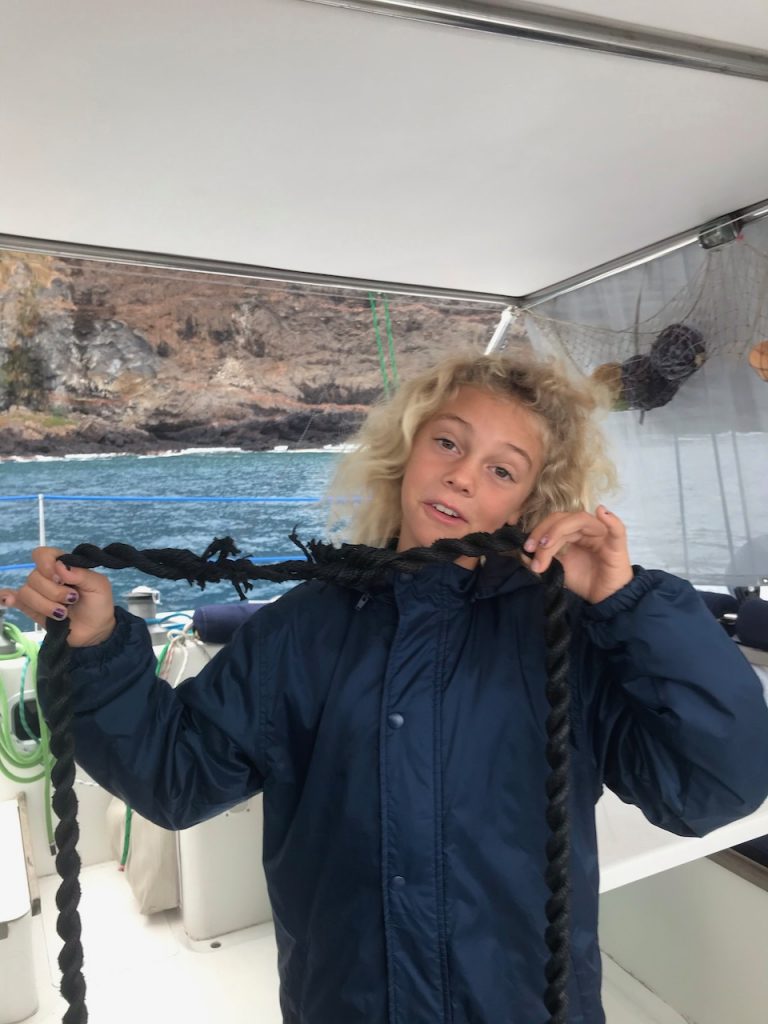
St. Helena, part of the British Commonwealth, is a bit intimidating from the outside. It’s made of high, steep cliffs which have smatterings of dried, lonely-looking vegetation. There are some industrial looking buildings and machinery right at the waterfront and a collection of buildings and houses peeping out behind a fortress-looking area. High up on the cliffs are other buildings but it’s unclear what they are.
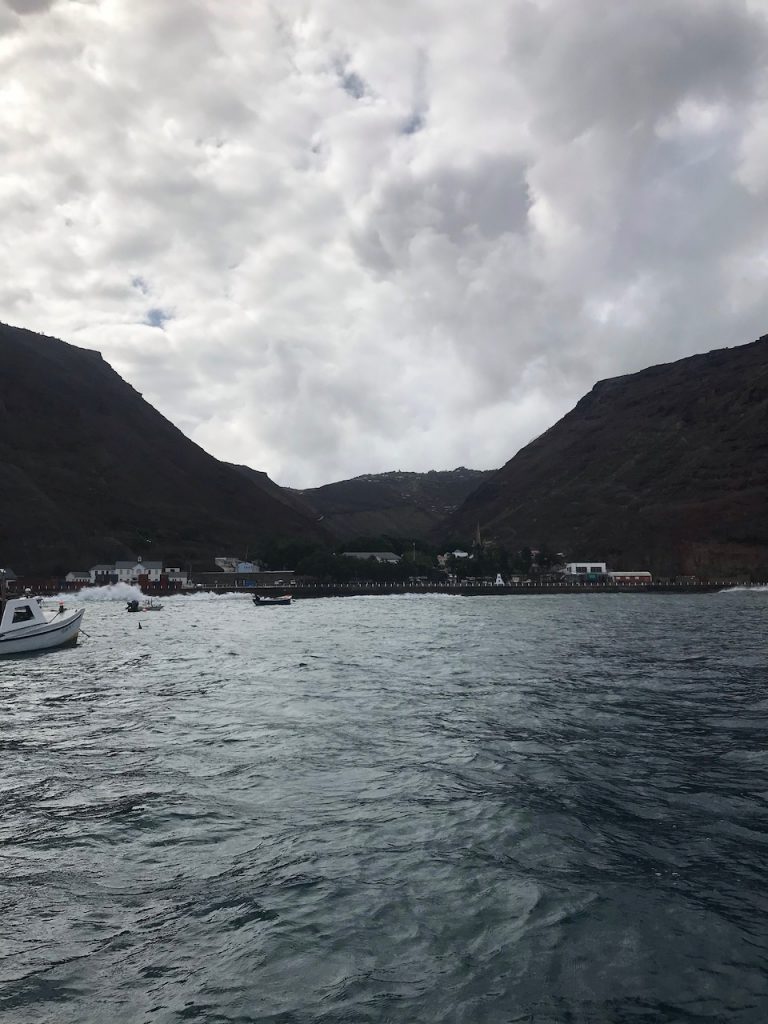
The island is a unique place. Despite its crusty exterior, it has a soft mushy center. Literally. We did two hikes during our time on the island and, both times, we started out in Jamestown, the city spilling down the valley. On both occasions, I packed plenty of water because it was hot and sunny. Then we drove up on top of the cliff and encountered rolling green hills and a hike through muddy fields inside clouds. We hiked to two high points to see the fabulous views. Unfortunately, it was the same view both days – that of the inside of a lovely gray cloud.
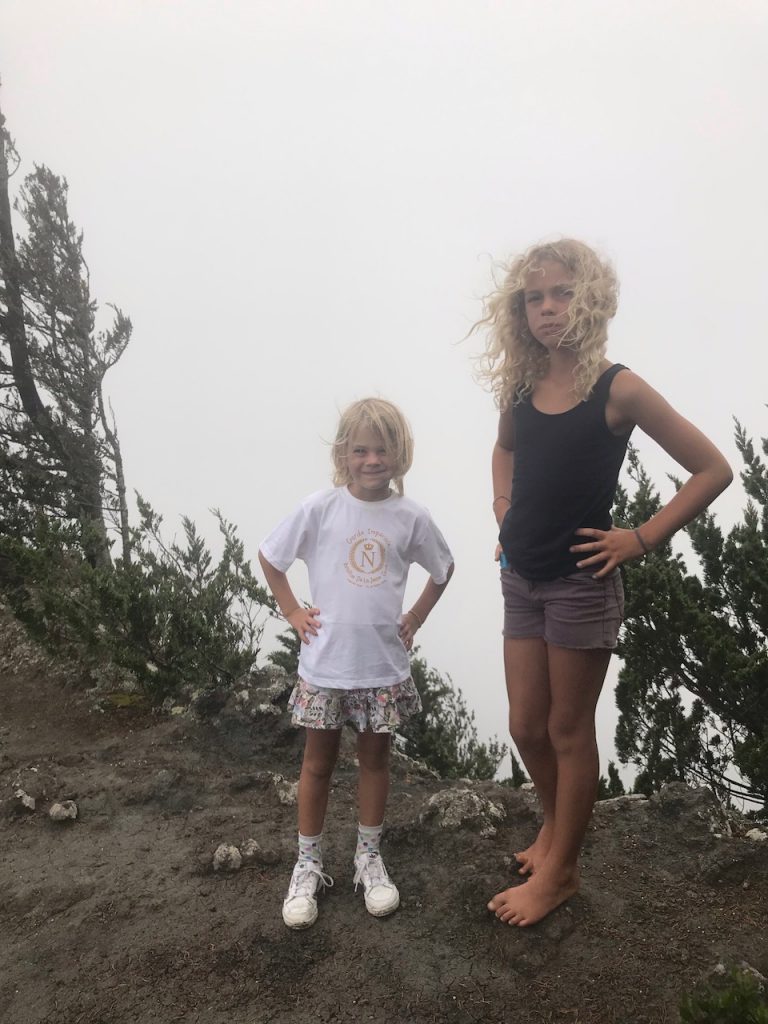
I rented a car, as I love doing. It makes me feel like I’m home – I can just jump in my car and zip off to wherever I want to go. Still on the left side of the road but I’ve found I’m quite comfortable there now. St. Helena has a surprising number of cars, given that the total residents are only about 4,000. Traffic wasn’t bad but driving there definitely had its challenges. In order to get out of the valley and up to the top of the island, you have to switchback up either the cliff to the left or the cliff to the right.
Regardless of your choice, you will find basically a one-lane road that was carved out of the rock face a long time ago – not really suited to modern cars or traffic. Apparently, there were some improvements made in the late 1970s which now allow cars to tuck into pull-outs in strategic locations. Before that, if cars met in an inconvenient spot, all the traffic behind them would have to reverse up or down the road until the cars in front could find a way around each other.
Now, you yield to the uphill traffic by watching the cars climbing up towards you. When you judge that they might come around the corner at any moment, you find a place to pull over and wait until they come by. A few very narrow spots have mirrors to help with visibility. The roads are more or less the same all over the island – one lane roads with two-way traffic. The exception is a new road built to accommodate the machinery that was brought to the island to build the airport. About 2- 3 years ago, St. Helena finally acquired an airport which has flights to and from Cape Town and Johannesberg. Because of the challenging wind conditions, only small jets can land on the island so they are still quite underserved in the visitor or delivery of stuff departments.
They do get a supply ship that comes every 3 – 4 weeks and restocks the shelves. There were a surprising number of different shops that each had a slightly different set of available goods. Like Tonga, the best strategy for provisioning was to tour all the shops to get a sense of what they offered.
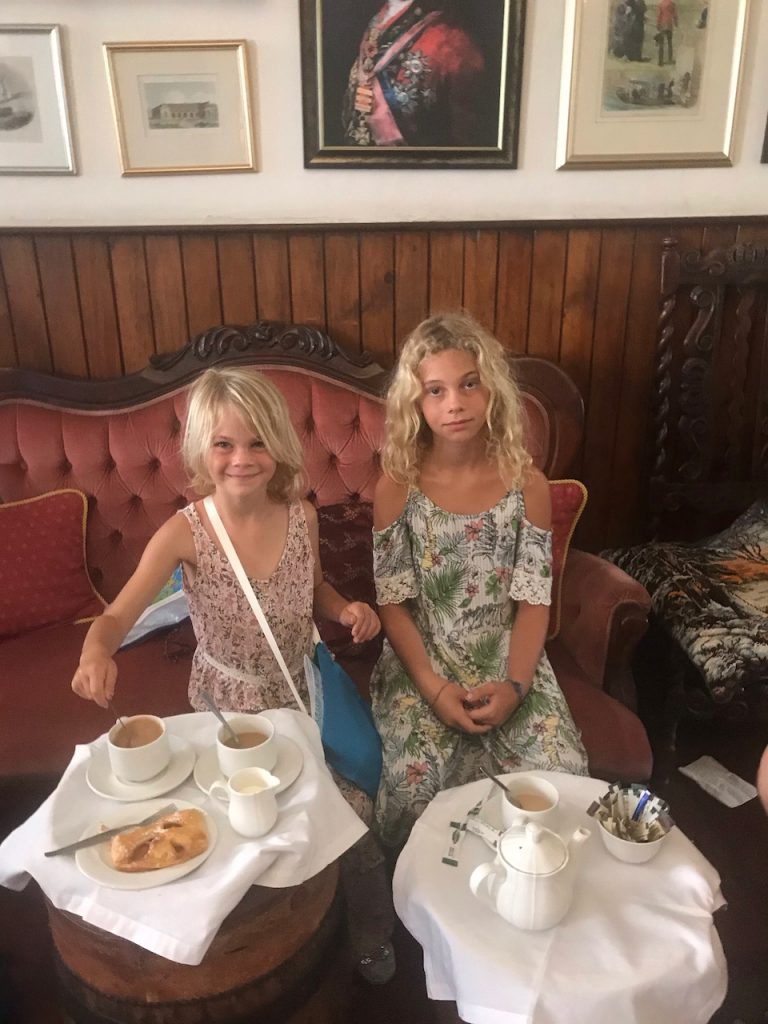
Here were my big finds, all in different stores: strawberry frosted Pop Tarts (very rare find in our travels), 10 1-liter bottles of sparkling water (I was told there were only small cans on the island), a case of Diet Coke (normally only Coke Zero is available), and pizza crust mix.
The day we arrived, Gemma and I looked in to see what produce was available and I got a little depressed. There were some sad looking onions, a few mushy looking green beans, and lots of strange looking globe-shaped squash. Back on Charm, after the crossing and restocking in Namibia, our fruit was still going strong although we had discovered that half our apple supply was of a mushy variety that no one would eat. But we were down to some withered carrots, questionable cabbage, and not much else other than a surplus of cucumbers. So, we were after some fresh vegetables.
Horrible visions of resorting to (gasp) canned veggies passed through my head. One of the advantages to being a faster boat is that we can usually get where we want to go before the fresh stuff runs out so I can use cans to supplement our meals rather than have them be the only option. Thankfully we got word that the farmers in the green hills brought their produce in on Thursday mornings. Gemma and I showed up bright and early on Thursday and found cabbages, gorgeous tomatoes and green beans and plenty of cucumbers. We sorted through the peppers in the fridge and managed to get a few yellow ones that only had a soft spot or two and found some fantastic crisp apples. No potatoes – there’s a shortage on the island and the deliveries from Cape Town are also backlogged for some reason. Our boat taxi driver asked us if we had any extras on board – too bad we didn’t know sooner or we could have stocked up in Namibia and set the kids up with a potato stand!
The biggest coup (apart from the Pop Tarts) was the lettuce. We had heard it was hard to come by but had some in a nice salad at the restaurant owned by the same folks that took us snorkeling with the whale sharks. I asked the owner where they got their lettuce and he said a local grower would be bringing it on Thursday morning. They kindly offered to order extra for us so now we have beautiful lettuce for salads that should carry us through at least the first week and then we can turn to the cabbage after that. Homegrown non-refrigerated carrots mean that we can store the carrots outside the fridge and therefore have room for the lettuce. Such little things that make such a difference in the quality of life on a boat.
While provisioning is always a big part of any visit, we also managed to see quite a bit of the island. We did the obligatory tour of Longwood, the house where Napoleon spent the last years of his life.
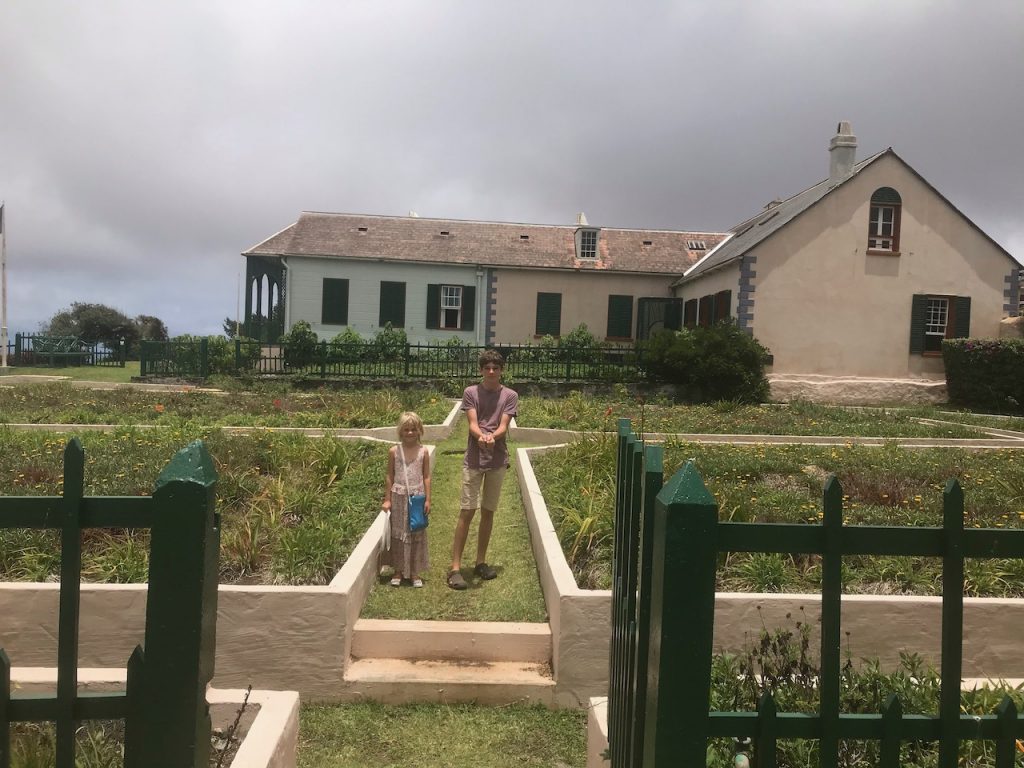
The highlight there was Ivy, a lovely tour guide who took Tully on a private tour after she had tired of the audio guide. Ivy is a former school teacher and was able to tailor the tour to things a young person would find interesting. Tully was completely captivated by her, partially because Ivy is a tiny person, only a few inches taller than our six-year-old daughter.
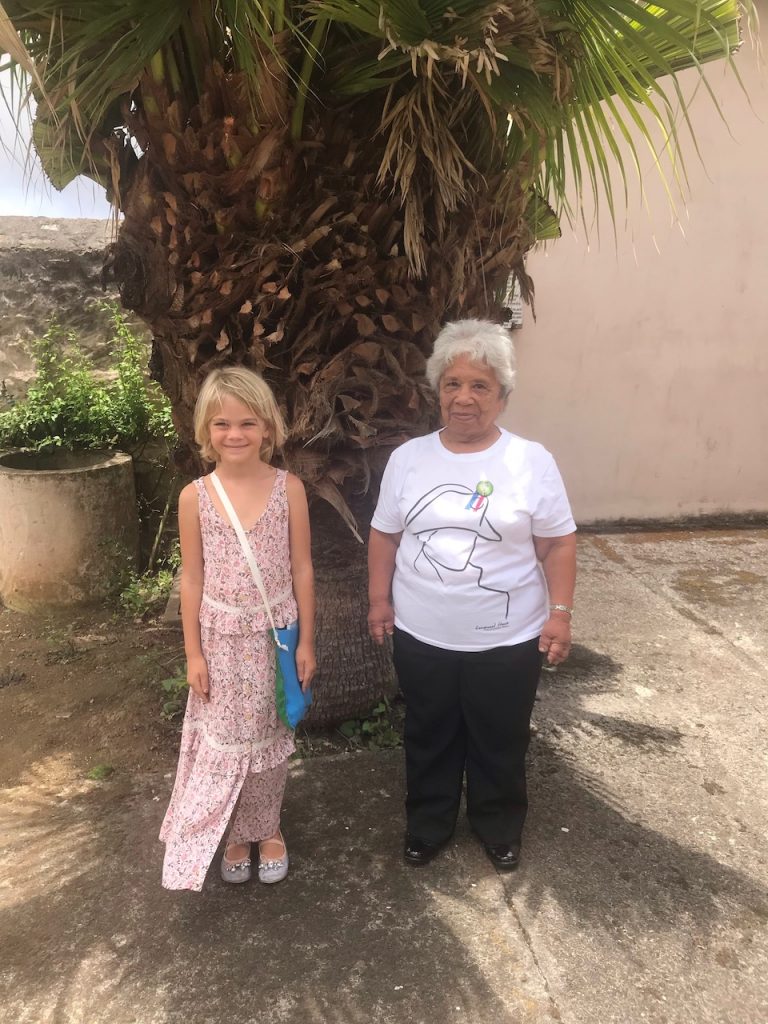
Joe, Gemma, Cobin and I climbed Jacob’s Ladder, a set of 699 steps leading to the top of the cliff at an angle of about 40 degrees. The steps are all that’s left of a system of cars that were used to transport munitions and supplies up to the fort from the town below. A local story tells that the soldiers stationed in the town used to pay kids to run up the steps to the fort to collect their lunches for them. The kids would climb the steps, get the soup, and slide down with their shoulders on one railing, their feet on the other, and the soup on their bellies. Later, school children would do the same with their backpacks in place of the soup. Our water taxi driver told us he used to do it but that he didn’t think any kids now were crazy enough to try it. Of course, we all had to try it but we couldn’t quite get the knack of it. It was surprisingly slow the way we did it so obviously we were missing something – no kid would ever do something that boring.

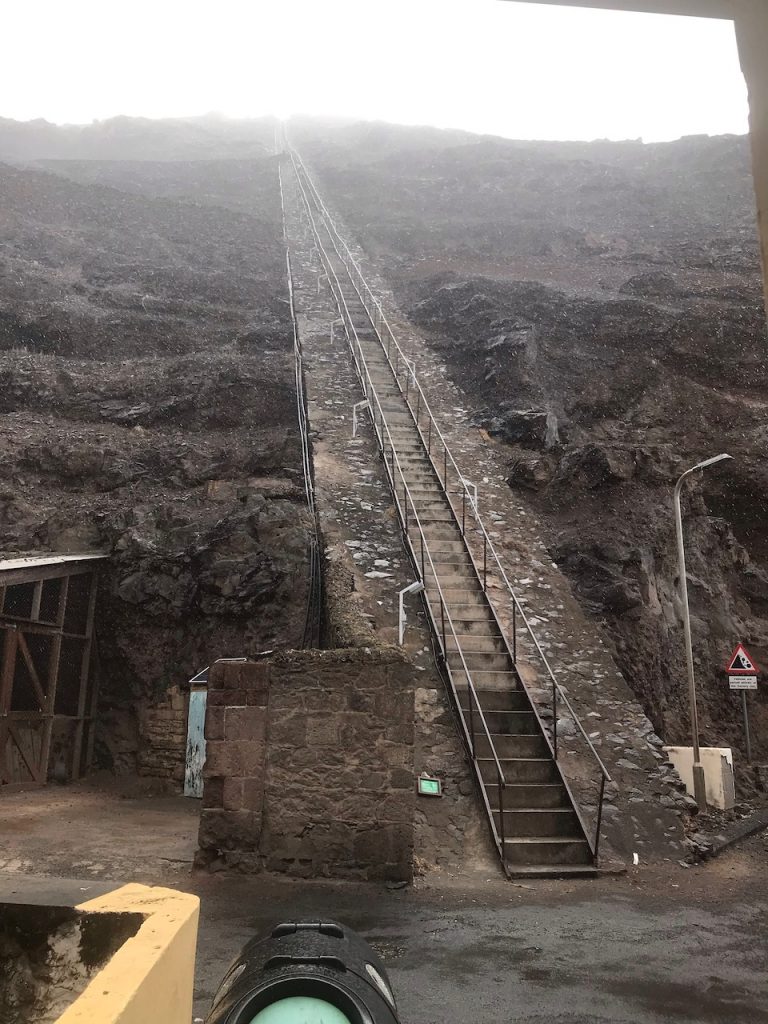
St. Helena is such a different kind of place – I’m sure Darwin would enjoy studying the local population. I think he did pass through and studied something on the island. Halley (of comet fame), Shackleton, Joshua Slocum (single-handed sailor) and many others all passed through, pursuing their various interests on the island.
We found the people to be kind and helpful although they had some interesting peculiarities and liked following all the rules. Marin has started us on a world library tour so we stopped in at the public library. I asked about checking out books for a night and they told me the limit was 4 books. I had to pay £5 for my membership and leave a £20 deposit so I asked if I could leave more money and check out more books since we only had one night. No. Four was the limit.
The radio operator repeated “St. Helena Radio, St. Helena Radio, St. Helena Radio” every time she transmitted. It is correct radio protocol to repeat the name three times but not EVERY time you speak to one another. It became comical after a time but thankfully our interactions with her were limited or we might have gone crazy.
We were not allowed to use our dinghies to get from our boats to shore so had to call the water taxi. He only traveled on the hour so we had to plan our trips to town very carefully. He was willing to work with us but his last normal run was at 7 pm. If we paid him extra, he would do a later run but it was obvious it wasn’t something he liked doing.
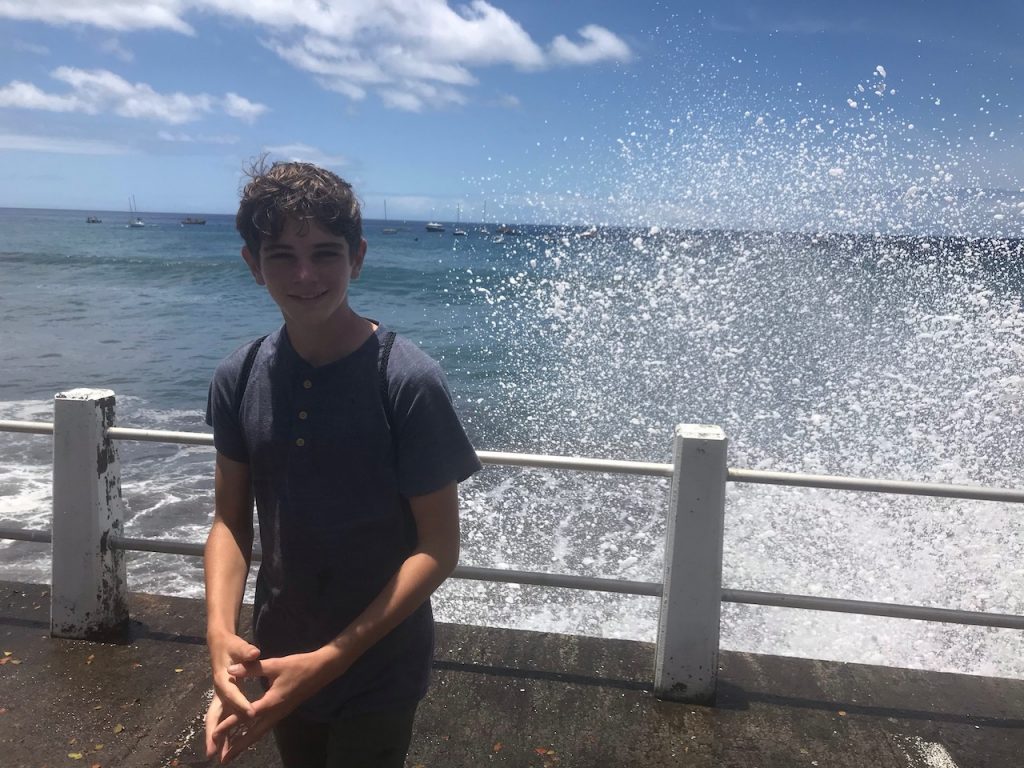
The island’s communications are all satellite-based so the internet is slow and expensive and not widely available. This also means that no one accepted credit cards. Locals had some sort of accounts set up or paid with a local debit card but we had to pay everything in cash. There were no ATMs so we had to wait in line at the bank and take money out via a debit or credit card. They would give you British pounds at the bank but all the local places gave you back change in St. Helena pounds, which can only be used on the island. One of our many challenges was to guess exactly how much cash we would need on the last day of provisioning. I found that having limited cash definitely forced me to make better choices about what I was buying. With only £7 left, and meat and broccoli on the list, it was much easier to say no to all the children’s requests. Gemma came through with one last pound for Joe to use to buy some fishing equipment so we all got more or less what we wanted.
Sometime during one of our visits, Cobin took Tully to the local museum. He came back telling us all about mortars and matching clocks and Tully was happy because the man at the museum gave them a magnet and a pen because “they talked to him.” After meeting some local kids at the swimming pool (another lovely surprise), Marin said she wanted to attend school for a day. I spoke to the head teacher at the primary school in town and she said Marin would be very welcome. While the rest of us went on a muddy hike, Marin spent the day in the local school.
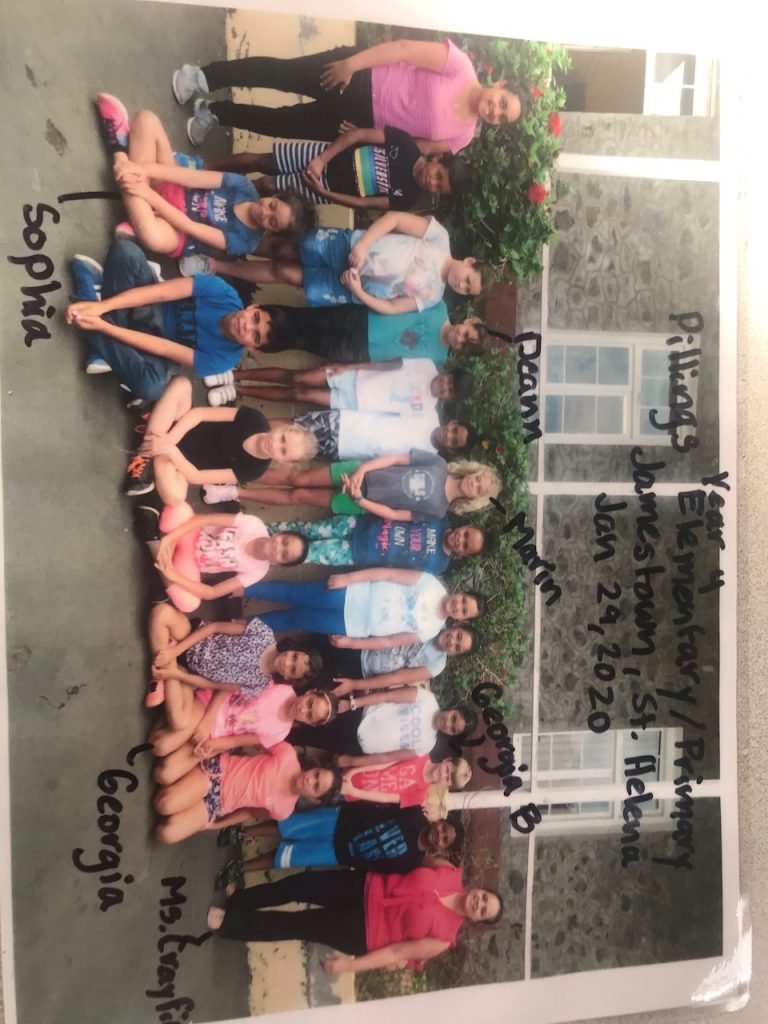
The school yard didn’t have much in the way of play equipment – most of the entertainment seemed to involve running. The younger kids challenged each other to races, following two lanes painted on the ground. Other kids were hanging around a soccer goal. The crossing guard facilitated an introduction to Marin and the kids around the soccer goal came over. I asked what they were playing and one of them told me it was called, “Et.” I said, “What is ‘Et’?” She said, in their peculiar British-but-not-quite accent, “Well, one kid is ‘et’ and she chases the others. If she tags one then that kid is ‘et.’ It’s kind of like tag.” Ahh, the exotic games played on the islands.
After school that day, Marin said that her legs hurt because all she did during each recess was play tag. It didn’t stop her from going to the pool to play with her new friends though. She enjoyed her day at the school and, based on what she told me about what they did, it seemed very much on par with what local kids in the US are studying. All of the kids were taking swimming classes once a week and Marin’s class had the option to take sewing, knitting or cooking on the day she attended. Many places we’ve visited seem to incorporate swimming as part of a child’s basic education which seems like a great idea – I’ve never encountered this in the US. Maybe it depends on the state?
As you will know if you have read Gemma’s blog (thanks Gemma!), we got to swim with whale sharks! Tully and Marin didn’t last long in the water because they got cold but the rest of us went in as much as time allowed. The dive operators had instructed us to stay a distance of 3 meters from any animals we encountered and said that we were not allowed to touch them. Marin asked, “But is it like the elephants? If they touch us, is it OK?” I told her I didn’t imagine they would try to touch us but, as usual, I was wrong.
Shortly after getting in the water, I was almost on top of the whale shark. I maneuvered out of the way but then found that she (the operators said she was a female) was coming right towards me. I was lucky if I was one foot away from it, much less 3 meters. I can’t say she was trying to touch me but she certainly didn’t seem to care that I was there. I tried to get the girls to dive underwater so I could take their pictures but they insisted they had to keep their distance. Gemma, Joe and Cobin were more cooperative and Cobin just finished our first video of the trip. At long last, we might get some of our many hours of footage turned into movies. Nothing will happen until Brazil but then we will have at least one to upload and share!

We left St. Helena yesterday afternoon after a lovely tour of Plantation House (the Governor’s official residence), a viewing of the planet’s oldest living vertebrate (Jonathan the tortoise, reported to be 185+ years old), and some last-minute provisioning.
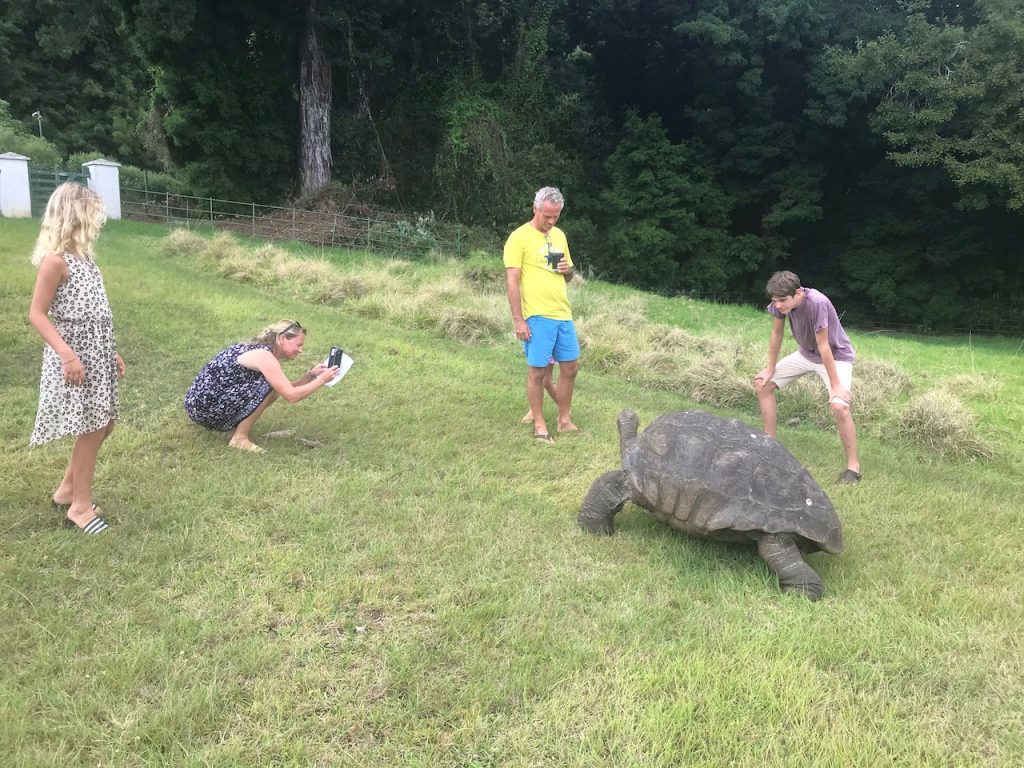

Now the only bits of excitement we have are satellite emails with updates on the impeachment proceedings from my mother (useful for our politics class) and updates on the Wuhan flu from Gemma’s husband, Ed. If you read Gemma’s blog, you will know that her husband and son are trying to get out of Hong Kong, where the family has lived for the past three years. School has been cancelled there until early March and stores are running low on supplies. Their daughter, Eva, just started boarding school in England in the fall. All visitors coming to the UK from China have to spend two weeks in quarantine so Ed and Henry will hopefully leave Hong Kong for an extended visit to England and be out of quarantine before Gemma meets up with them in mid-February.
We’re trying to persuade Gemma to go back to the UK to pick up Henry and rejoin us for the next long leg to Grenada from Cabadelo. If he’s not able to go to school in Hong Kong, he might as well be in Charm School!
Follow these links to see Cobin’s videos of whale sharks and paragliding:

